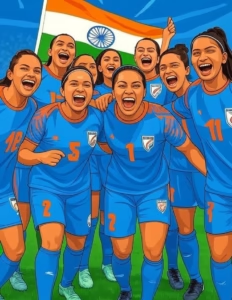ICSE Class 9: Pollination and Fertilization – Comprehensive Answer Set
Pollination and Fertilization
Section 1: Association Task
| Column I | Column II |
| Stigma with an extended feathery structure | Wind-pollination |
| Asynchronous maturation of anthers & stigma | Dichogamy |
| Elephant-assisted pollination | Rafflesia |
| Nectar-producing flowers | Entomophilous |
Section 2: Fill in the Blanks
- The process involving the transfer of pollen grains is termed pollination.
- are self-pollination and cross-pollination.
- Self-pollinated flowers do not require being fragrant or visually attractive.
- For effective self-pollination, anthers and stigmas should mature simultaneously.
- Self-pollination does not lead to genetic variations.
- Wind pollination often results in a considerable amount of pollen wastage.
Check 2: True or False
- The intine forms the outer layer of the pollen grain. False
- The zygote develops into an embryo. True
- The ovule eventually forms the fruit. False (It forms the seed)
- Some fruits retain dry sepals after maturation. True
Multiple Choice Questions
- B) Pollen grain
- C) Synchronization of stigma and anther maturation
- B) Autogamy
- A) Homogamy
- C) Ornithophily
- C) Bignonia
- C) Insect-pollinated
- C) Tassel
- A) Pea plants
- A) Generative nucleus
Very Short Answer Questions
- Primary Pollinators:
- Dahlia: Butterflies
- Maize: Wind
- Vallisneria: Water
- Fill in the Blanks:
- The transfer of pollen grains to the stigma of the same flower is termed autogamy.
- The difference in maturation times of gynoecium and androecium is known as dichogamy.
- Vallisneria is a classic example of water-pollinated flowers.
- Matching:
| Column A | Column B |
| Generative nucleus | Male nuclei |
| Germ pore | Pollen tube |
| Exine | Rough |
| Secondary nucleus | Endosperm nucleus |
| Integument | Testa |
| Egg nucleus | Fertilization |
- Parts of the Ovary:
- Seed: Ovule
- Fruit: Ovary
- Fruit wall: Ovary wall
- Single Terms:
- A flower with both reproductive organs: Bisexual flower
- The arrangement of flowers on a stem: Inflorescence
- Pollination where pollen reaches its own stigma: Autogamy
- Differing maturation times in reproductive parts: Dichogamy
- Unequal growth of stigma and anthers promoting cross-pollination: Herkogamy
- Pollination facilitated by insects: Entomophily
- Pollination facilitated by birds: Ornithophily
Short Answer Questions
- Definitions:
- Ornithophily: Pollination facilitated by birds.
- Elephophily: Pollination facilitated by elephants.
- Artificial pollination: Manually transferring pollen grains to facilitate fertilization.
- Explanation of Terms:
- Pollination is the process of transferring pollen from the anther to the stigma.
- Herkogamy: Physical barrier preventing self-pollination.
- Cleistogamy: Pollination that occurs in closed flowers.
- Emasculation: Removal of stamens to prevent self-pollination.
- Fertilization: Fusion of male and female gametes.
- Transformations after Fertilization:
- Ovules: Develop into seeds.
- Calyx: May fall off or remain as protective covering.
- Petals: Usually fall off post-pollination.
- Stamens: Wither and fall off.
- Floral Adaptations for Cross-Pollination:
- Brightly colored petals to attract pollinators.
- Nectar to lure insects.
Long Answer Questions
- Differences:
- Autogamy vs Geitonogamy: Autogamy occurs within the same flower; Geitonogamy occurs between different flowers on the same plant.
- Homogamy vs Dichogamy: Homogamy is simultaneous maturity of anther and stigma; Dichogamy is asynchronous maturation.
- Protandry vs Protogyny: Protandry is when the anther matures first; Protogyny is when the stigma matures first.
- Entomophilous vs Anemophilous flowers: Entomophilous attract insects; Anemophilous rely on wind.
- Advantages of Self vs Cross-Pollination:
- Self-pollination ensures seed formation and is energy efficient.
- Cross-pollination introduces genetic diversity.
- Benefits of Plant Features:
- Long, feathery stigma: Captures wind-borne pollen.
- Brightly colored petals: Attract pollinators.
- Lightweight, smooth pollen: Easier wind dispersal.
- Exposed, movable anthers: Facilitates pollen release.
- Fragrant nectar: Lures insects.
- Pros and Cons of Cross-Pollination:
- Pros: Genetic diversity, better adaptability.
- Cons: Dependence on external agents, more energy required.
- Role of Pollen Tube:
- The pollen tube carries the male gamete to the ovule for fertilization.
- (Illustrative diagram should be provided)
Structured/Application Questions
- Diagram Analysis:
- (a) Process: Pollination
- (b) Term: Cross-pollination
- (c) Examples: Mango, Hibiscus
- (d) Advantage: Genetic diversity; Disadvantage: Dependency on external factors.
- (e) Agents: Wind, insects
- Pollen Grain Diagram:
- (a) Labels: Exine, Intine, Germ pore, Generative nucleus, Tube nucleus.
- (b) Occurs on the stigma; pollen absorbs moisture and germinates.
- (c) Role of ‘4’ (Generative nucleus): Produces sperm cells.
- (d) ‘5’ (Tube nucleus) guides the growth of the pollen tube.
- Fertilization Diagram:
- (a) Labels: Stigma, Style, Ovary, Ovule, Embryo sac, Egg cell.
- (b) Ovary develops into fruit; Ovule develops into seed.
- (c) Synergids help guide the pollen tube to the egg cell.
- (d) Stigma receives and supports pollen germination.
This comprehensive answer set covers every section of the provided ICSE Class 9 Pollination and Fertilization worksheet.





